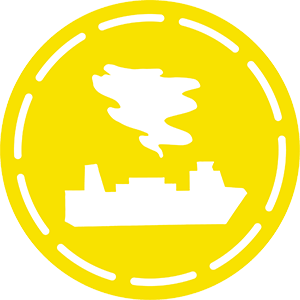Working Zones
What are the different working zones for the rescue operation around the distress vessel?
- Cold zone – this is the zone which is the farthest from the distress vessel. It is not contaminated and it is free for the supporting units to work in. There is no need to wear Personal protective Equipment (PPE). Cold zone defines the outer limits of the whole restriction area. Anyhow, it also needs to be surveilled, and maritime traffic which is not involved in the rescue operation is not allowed in this zone.
- Warm zone – this is the zone between the cold and the hot zone and it can also be called the transition area. The warm zone is a buffer area between hot and cold zones. In this area personnel has to be prepared to use PPE, due to risk of occasional contamination.
- Hot zone – this is the area nearest to the distress vessel and everyone entering this zone is required to have the highest level of PPE on them. Depending on the situation, the hot zone can even mean some section onboard the distress vessel.
Remember! Only the Search and Rescue Units equipped with the capability of entering HNS incident area are allowed to enter the working zones. These units are equipped with the appropriate PPE, their vessels are equipped with, for example, pressure possibilities (positive pressure) and all in all, the units are trained to meet the challenges caused by HNS.
However, there can be also an entry point allowing controlled access to the distress vessel to get closer to it and have better possibility even to board the vessel. This entry point should be upwind, and only vessels and personnel prepared with the capacity and the needed equipment should perform the actual rescue operation.
Did you get it? Test yourself!
Results
#1.
In this section you have learned that:
- To prevent further damage you should formulate the restriction area at an early phase
- When making decision, you should consult many different experts and actors in order to make decision based on the right information.





